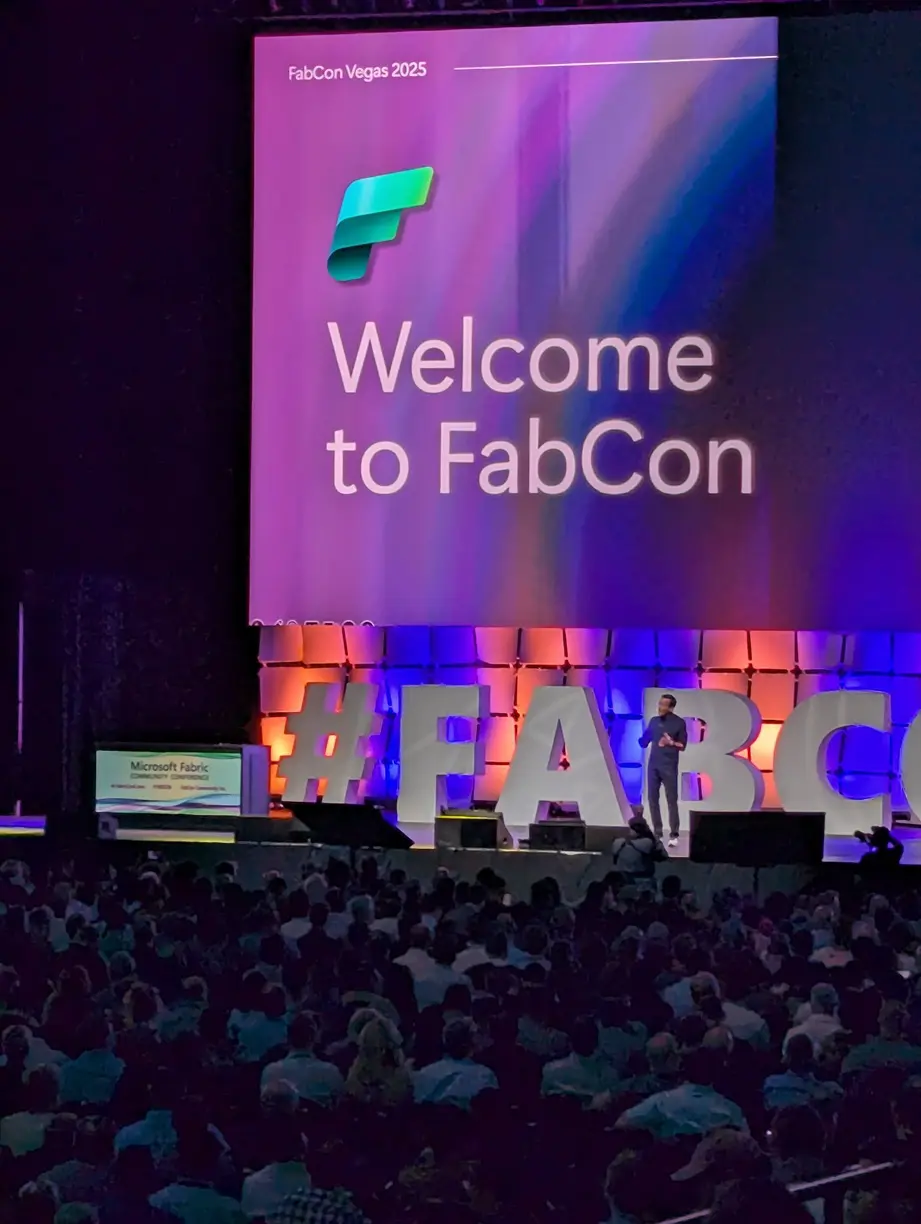Microsoft FabCon Day 1: Insights on Microsoft Fabric, Synapse and the future of Cloud Analytics
Voyages of an Optimistic Pragmatist
Guess what! This week I’m lucky enough to be heading out to FabCon. Joining 6,999 other data enthusiasts. FabCon is Microsoft’s “ultimate Microsoft Fabric, Power BI, SQL, and AI community experience”. It’s been a while since I’ve travelled long distance for work (yes, I hear you, a week in Las Vegas doesn’t sound much like work) and having got thoroughly fed up with travel back in the day, I’m quite looking forward to it.
Microsoft Fabric, launched in preview at Build 2023 and generally available in November, has benefited greatly from community feedback (Which Fabric Expert’s Simpson Associates have been part of), allowing for swift improvements and a closer alignment between its innovative features and practical user needs.
The launch of Microsoft Fabric back in 2023 introduced an innovative future, immediately promoting Simpson Associates customers to evaluate this new platform against their current solutions. Now, in its current state of maturity, Microsoft Fabric is delivering significant value to both partners and customers, and the future of Synapse Analytics is clearer. I’m excited to see the new updates at FabCon, and Microsoft’s plans for this innovative platform.

Firstly, let’s explore the recent signs of progress, and the meaningful benefits implemented.
In response to the community feedback, there have been some meaningful launches and developments to Fabric over the past year. Let’s dive into a few:
Improved Data Integration
OneLake shortcuts and Unity Catalog integration with Databricks have made cross-platform data sharing more viable. Native support for Delta Lake table format and support for creating shortcuts to Apache Iceberg tables stored externally enables interoperability between Fabric and platforms like Snowflake and Databricks.
Enhanced Data Governance capabilities
Microsoft Purview integration has strengthened Microsoft Fabric’s enterprise governance story, elevating Microsoft Fabric implementation.
Real-time data analytics enhancements
Real time capabilities have matured, with better streaming support and reduced latency for reporting on fresh data, allowing data-driven insights.
SQL endpoint performance
The SQL query performance for Lakehouse has developed, becoming more accessible to teams who prefer to stay in a SQL oriented world, whilst keeping up to date with the latest data trends.
Artificial Intelligence (AI) Integration
Copilot features for authoring DAX and automating data preparation workflows show Microsoft is staying up to date and ahead of the curve with the new world of AI analytics trends.
These developments have transformed Microsoft Fabric to be the innovative platform it is today. Now, the question is, how will they accelerate innovation in the cloud analytics space?
I’m approaching FabCon with an open mind and anticipation to hear about the latest updates.
What I’m looking forward to hearing at FabCon
Pricing and Performance Transparency
The capacity-based model is interesting and the burst/borrow approach to capacity usage is innovative. Now the question that needs answering is: how much will it cost to run my existing Synapse workloads on Fabric? Are customers going to pay more or less for the same performance? The shift from a PaaS “pay for what you use” model to a capacity based SaaS offering changes the economics of running a data workload on Azure.
Platform Clarity
With three data platforms under one roof (Lakehouse, Warehouse and SQL Database), I’m looking for guidance on which platform suits which workload, with real-world examples in practice, migration paths and feature roadmaps to be explored. The introduction of SQL Database is intriguing. This is the platform (SQL Server) that has been the choice for running BI workloads in recent times, and it will be insightful to see how the SQL Database in Fabric will be used
Market Positioning: Microsoft Fabric Implementation
Is Fabric positioning itself as a complementary tool to Databricks and Snowflake or is this positioned as a market disruptor? If Microsoft does position Fabric primarily as the “Gold Layer” consumer for Databricks or Snowflake data platforms, how does this translate for consumers? Once an enterprise has Databricks in place, there’s little technical incentive to move workloads to Fabric for superior capabilities, which poses interesting questions.
I’m hoping to pick up clues from the sessions to see where Microsoft sees the vision for Fabric, and if this is positioned as the end-user sandbox and platform for Power BI.
Power BI Premium Migration Clarity
With Microsoft preparing to switch Power BI Premium (P1) subscribers to transition to Fabric F64 SKUs. There is potential for increased effectiveness and developments. As of March 2025, the monthly cost for a Power BI Premium P1 capacity is around $5,000. The pay-as-you-go monthly rate for an F64 capacity in Fabric is about $8,000 (reducing to closer to $5,000 with a reserved instance).
Optimistic Pragmatism and the Future of Microsoft Fabric Consulting
I’m not attending FabCon as a cheerleader or a critic, but as someone who wants Microsoft to succeed in this space; I have a 35-year old career invested in this after all, and as a Fabric Featured partner, this plays a key role in helping consumers unlock the power of their data.
I’m hoping that FabCon will address real customer questions and queries, as well as build value and enable customers to accelerate their data vision. The analytics world needs strong competition, Fabric’s value proposition can disrupt this, delivering direct value.
Those who know me know that I carry my pragmatism with me everywhere I go but this week I’m leaving a bit of room in my hold baggage for some optimism. Las Vegas is, after all, a place for big bets and unexpected wins.
Blog Author: Mick Horne, Data Analytics Practice Manager at Simpson Associates.
View the other FabCon blogs here, and keep up to date with the latest updates direct from Las Vegas.
Get in touch to see how Simpson Associates can accelerate your Microsoft Fabric data journey, start a live chat now.


